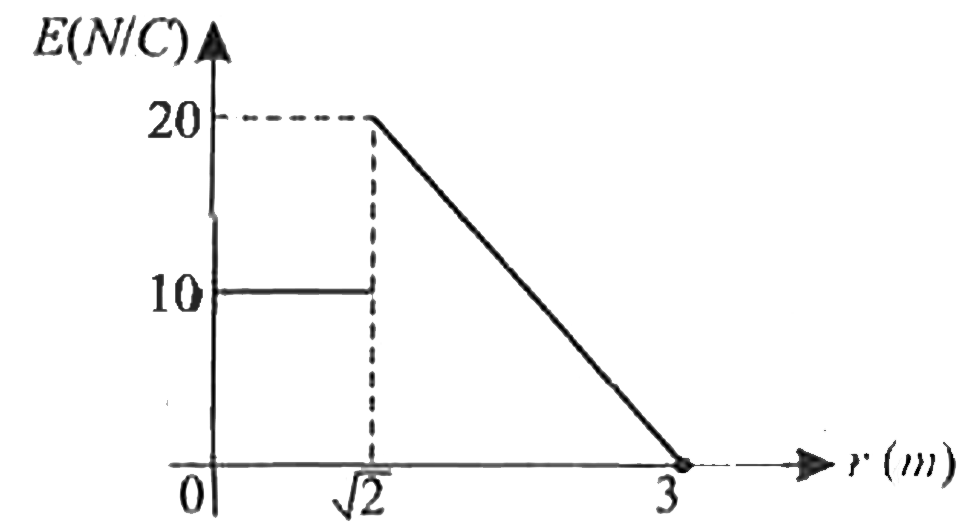A charge distribution generates a radial electrif field →E=ar2e−rkˆr, where r is distance from the origin ˆr is a unit vector in radial direction away from the origini and a and k are positive constants. The electric field extends around the origin up to a large distance.
(a). Find the charge (q0) that must be located at the origin to create such a field
(b). Find the quantity of charge (q) that must be spread around the charge q0 at origin to create such a field.
The correct Answer is:(a). q0=4πε0a
(b). q=−4πε0a
Step by step video, text & image solution for A charge distribution generates a radial electrif field vecE=(a)/(r^(2))e^(-(r)/(k))hatr, where r is distance from the origin hatr is a unit vector in radial direction away from the origini and a and k are positive constants. The electric field extends around the origin up to a large distance. (a). Find the charge (q_(0)) that must be located at the origin to create such a field (b). Find the quantity of charge (q) that must be spread around the charge q_(0) at origin to create such a field. by Physics experts to help you in doubts & scoring excellent marks in Class 12 exams.
Updated on:21/07/2023Topper's Solved these Questions
- ELECTROSTATICSBOOK - ARIHANTCHAPTER - ELECTROSTATICSEXERCISE - Level 3
59 Videos
- ELECTROSTATICSBOOK - ARIHANTCHAPTER - ELECTROSTATICSEXERCISE - Level 3
59 Videos
- ELECTROMAGNETIC INDUCTIONBOOK - ARIHANTCHAPTER - ELECTROMAGNETIC INDUCTIONEXERCISE - Level 3
12 Videos
- GEOMETRICAL OPTICSBOOK - ARIHANTCHAPTER - GEOMETRICAL OPTICSEXERCISE - Level 3
9 Videos
Similar Questions
A point charge q is placed at the origin . How does the electric field due to the charge very with distance r from the origin ?
View SolutionThe electric field in a region is radially outward with magnitude E = 2r. The charge contained in a sphere of radius a = 2m centerd at the origin is 4xπε0. Find the value of x.
View Solution
Knowledge Check
The electric field created by a point charge falls with distance r from the point charge as
A1rB1r2C1r3D1r4The electric field in a region is directed outward and is proportional to the distance r from the origin. Taking the electric potential at the origin to be zero
AIt is uniform in the regionBIt is proportional to rCIt is proportional to r2DIt increase as one goes away from the origin.The electric field in a region is radially outward with magnitude E=Ar0 . The charge contained in a sphere of radius r0 centred at the origin is
AAr304πε0B4πε0Ar0C4πε0Ar30DA4πr3ε0
The electric field in a region is directed outward and is proportional to the distance r from the origin, Taking the electric potential at origin to be zero,
View Solution" Electric field intensity due to a point charge " "q" ' at a distance 'r' from it is "
View SolutionThe electric field in a certain region is acting radially outwards and is given by E=Ar.A charge contained in a sphere of radius 'a' centred at the origin of the field, will given by
View SolutionA charge q=−2.0μC is placed at origin. Find the electric field at (3m,4m,0).
View SolutionAn electric field 'E' whose direction is radially outward varies as distance from origin 'r' as shown in the graph E is taken as positive if its direction is away from the origin. Then the work done by electric field on a 2 C charge if it is taken from (1,1,0) to (3,0,0) is :

View Solution
